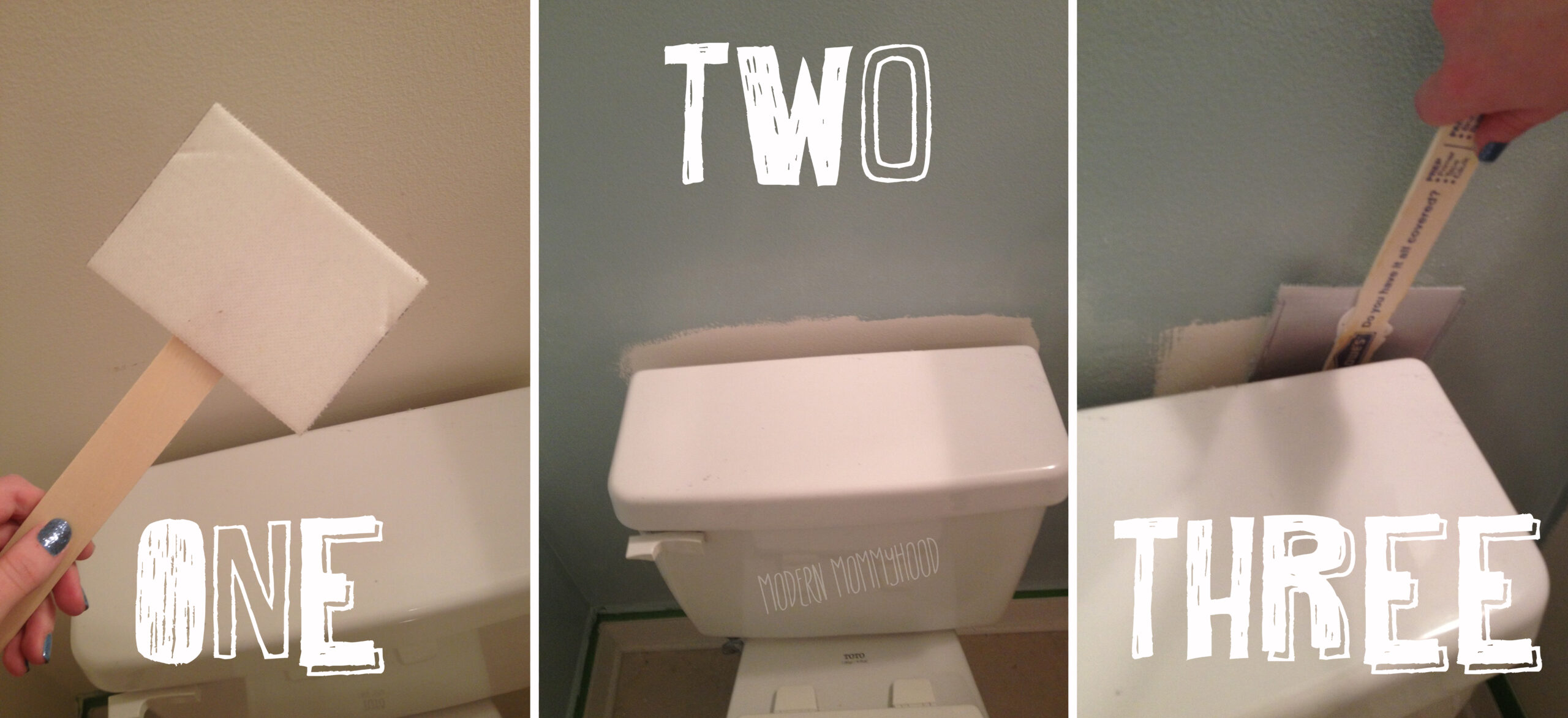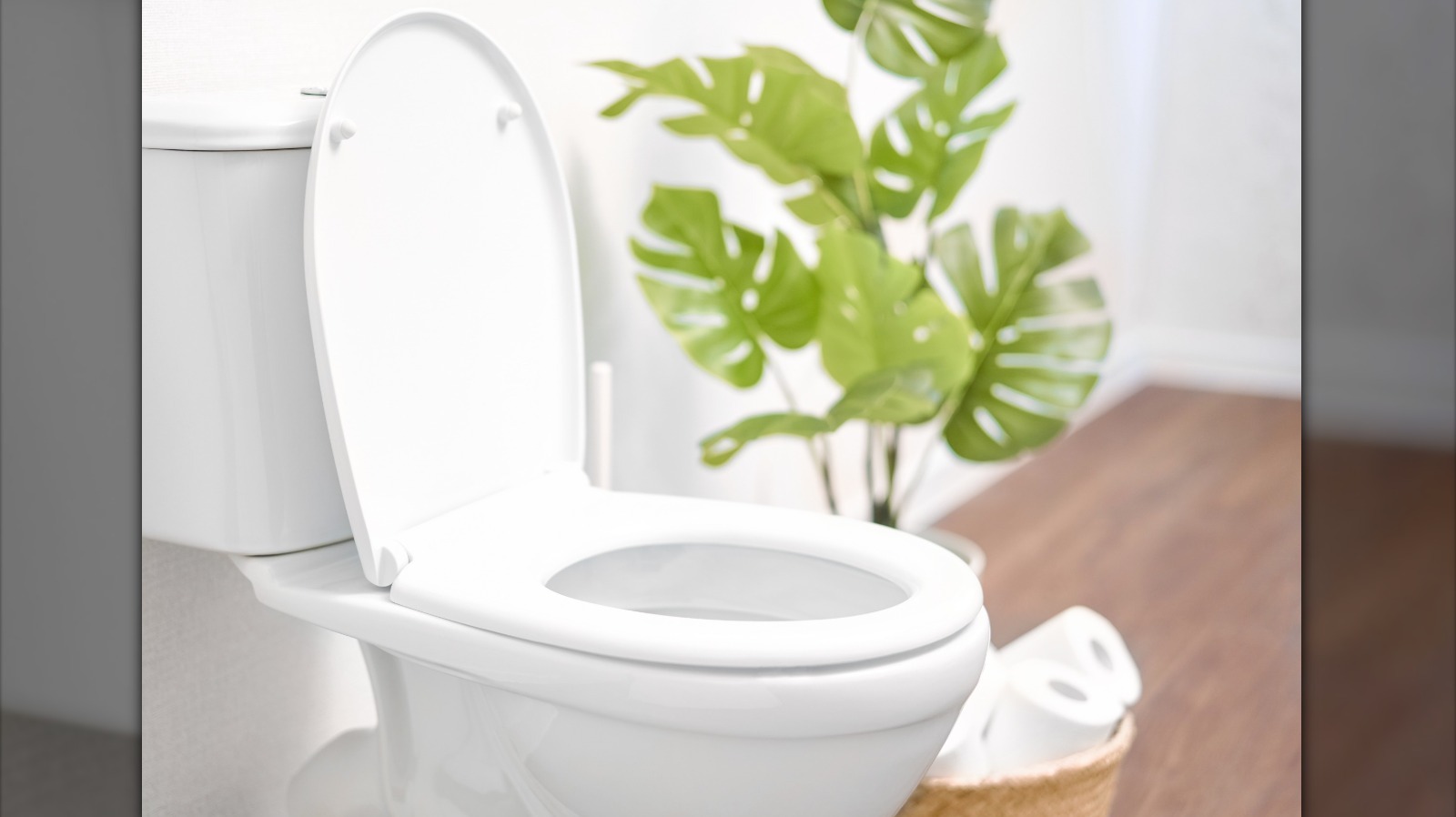Preparing the Area

Before you start painting, it’s crucial to prepare the area behind the toilet. This involves gathering the right tools, protecting the surrounding surfaces, and thoroughly cleaning the area to ensure a smooth and successful paint job.
Tools Needed for Painting Behind a Toilet, How to paint behind bathroom toilet
To effectively paint behind a toilet, you’ll need the following tools:
- Paintbrushes: Choose a variety of brush sizes, including a small brush for detailed areas and a larger brush for broader surfaces. A brush with angled bristles is ideal for reaching corners and edges.
- Paint roller: A small roller with a short nap is best for covering larger areas behind the toilet quickly and efficiently. Ensure you have a roller tray to hold the paint.
- Painter’s tape: This will help protect surrounding areas, such as the baseboard, floor, and walls, from accidental paint splatters.
- Drop cloths: Use drop cloths to cover the floor and any other surfaces that might get splashed with paint. Plastic drop cloths are easy to clean and are a good choice for this task.
- Cleaning supplies: You’ll need a bucket of water, a sponge, and some mild detergent to clean the area behind the toilet before painting.
Protecting the Surrounding Area
Properly protecting the surrounding area from paint splatter is essential for a clean and professional-looking paint job. Here’s how to do it:
- Apply painter’s tape: Use painter’s tape to cover the edges of the baseboard, floor, and walls around the toilet. Make sure the tape is firmly pressed down to prevent paint from seeping underneath.
- Lay down drop cloths: Spread drop cloths over the floor and any other surfaces that might get paint on them. Ensure the drop cloths extend beyond the area you’re painting to catch any drips or splatters.
Cleaning the Area Behind the Toilet
Before you start painting, it’s crucial to clean the area behind the toilet thoroughly to remove any dirt, dust, or mold that could interfere with the paint’s adhesion.
- Remove any loose debris: Use a broom or vacuum cleaner to remove any loose debris, such as dust, cobwebs, or paper scraps.
- Wipe down the area: Use a damp sponge and mild detergent to wipe down the area behind the toilet. Pay close attention to any mold or mildew growth, as these can affect the paint’s longevity.
- Let the area dry completely: Allow the area to dry completely before applying paint. This will ensure the paint adheres properly to the surface.
Choosing the Right Paint
Choosing the right paint for your bathroom is crucial, as it needs to withstand moisture, resist mildew, and be easy to clean. The bathroom environment is unique, and not all paints are created equal. You need to consider the specific characteristics of the paint and how they will perform in your bathroom.
Types of Paint
The type of paint you choose can significantly impact the durability and longevity of your bathroom’s paint job. Let’s explore some popular options and their pros and cons.
- Latex Paint: This water-based paint is a popular choice for bathrooms due to its ease of application, quick drying time, and low odor. It is also relatively inexpensive and cleans up easily with soap and water. However, latex paint may not be as durable as other options and can be susceptible to mildew growth in humid environments.
- Acrylic Paint: Similar to latex paint, acrylic paint is also water-based and offers good adhesion, durability, and moisture resistance. It is known for its excellent color retention and is a good choice for high-traffic areas like bathrooms. However, it may be slightly more expensive than latex paint.
- Oil-Based Paint: Oil-based paint offers excellent durability, moisture resistance, and mildew resistance. It provides a hard, durable finish that is resistant to stains and scrubbing. However, oil-based paint requires mineral spirits for cleanup, has a strong odor, and takes longer to dry than water-based paints.
Importance of Mildewcide
Bathrooms are prone to mildew growth due to the constant presence of moisture. Selecting a paint with a mildewcide is essential to prevent the formation of unsightly and potentially harmful mildew. Mildewcide is an additive that inhibits the growth of mold and mildew on painted surfaces. It helps to keep your bathroom walls looking fresh and clean for longer.
Painting Techniques: How To Paint Behind Bathroom Toilet

Now that you’ve prepared the area and chosen the right paint, it’s time to get down to the actual painting! Here’s a step-by-step guide to painting behind the toilet, ensuring a smooth and even finish.
Applying Paint
To achieve a professional-looking finish, follow these steps:
- Start with the Edges: Using a brush, carefully paint the edges and corners behind the toilet. This will ensure that the paint reaches all the nooks and crannies. Apply a thin, even coat, allowing the paint to dry before moving on.
- Use a Roller for Large Areas: Once the edges are painted, use a roller to cover the larger areas. Load the roller with paint, ensuring it’s evenly coated, and roll in smooth, even strokes. Avoid over-applying paint, as this can lead to drips and uneven coverage.
- Roll in a Consistent Direction: To ensure a seamless finish, roll in the same direction for each coat. This will help to blend the paint and avoid any noticeable lines or streaks.
- Apply Thin Coats: Apply thin coats of paint, allowing each coat to dry completely before applying the next. This will prevent the paint from becoming too thick and uneven.
- Check for Coverage: Once the first coat is dry, check for any areas that require additional coverage. Apply a second coat if necessary, following the same steps as the first coat.
Handling the Narrow Space
Painting behind the toilet can be tricky due to the limited space. Here are some tips to make the process easier:
- Use a Small Roller: A small roller is ideal for reaching tight spaces behind the toilet. It allows for greater control and maneuverability.
- Extend the Roller Handle: Extending the roller handle will give you more leverage and make it easier to reach the top areas behind the toilet without having to strain or contort yourself.
- Use a Brush for Detailing: For the tightest spaces, a small brush can be used to touch up areas that the roller cannot reach. This ensures that all areas are covered with paint.
- Avoid Getting Paint on the Toilet: This is a common problem when painting behind the toilet. To prevent paint splatters, use painter’s tape to protect the toilet seat, lid, and bowl. You can also use a drop cloth to protect the floor.
